Scrap Materials Box
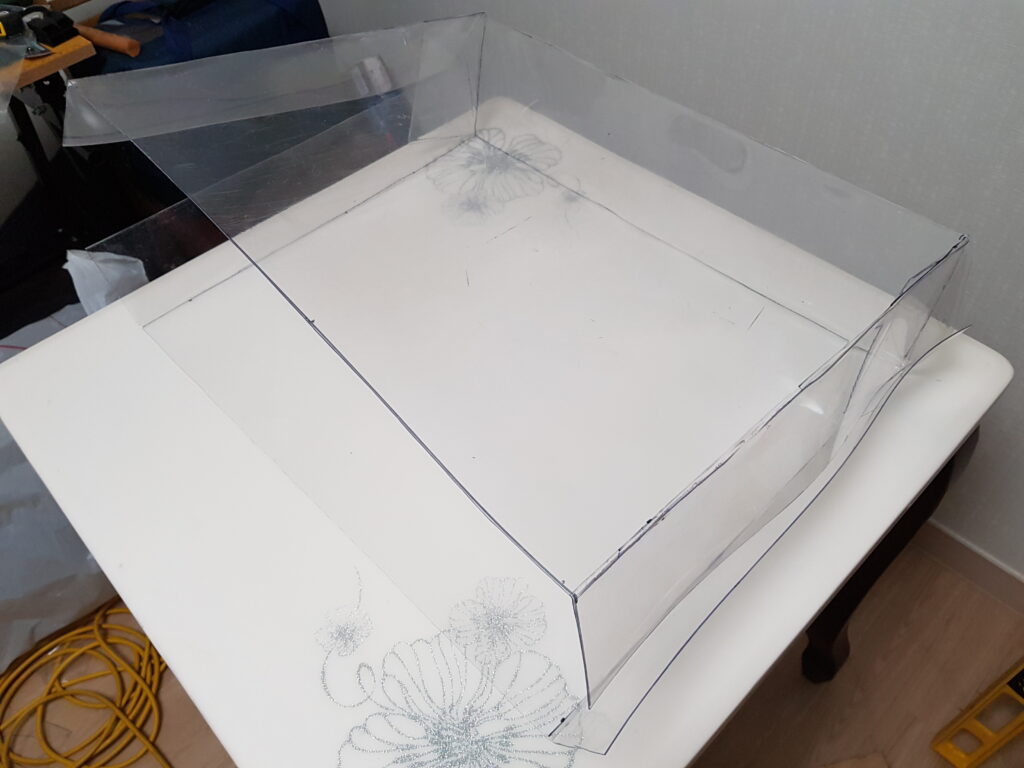
Above I used the remaining part of the roll of PVC sheet and formed it into a wide and tall box-shape. I needed a place to store scrap materials because I had bene using just a large plastic bag for this purpose.
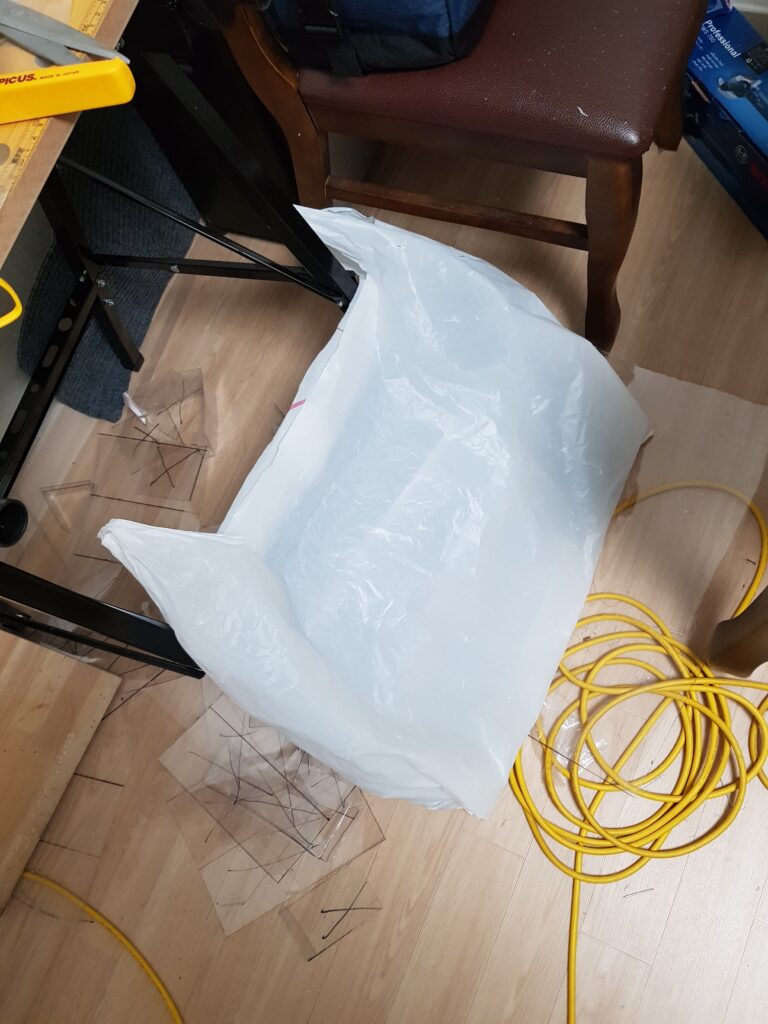
This image shows the large plastic bag I had been using to store my scrap materials but it is not durable and PVC sheet or wood pieces can easily puncture the bag so something more durable was needed. Some of these materials (scrap pieces left-over from the tool box projects) can be seen on the floor. I do not throw away scrap pieces because these are often used to make small items or brackets or holders. Boys should be taught to save any useable sized scraps because it would be a big waste to cut up a new sheet only for some tiny piece needed. Even when installing handles on the box, I needed four small squares of acrylic sheet to rivet the strap handles onto the sides. I used small pieces of PVC sheet (the size of a match box) to hold the straps to the box. I cut these out of the scrap pieces seen laying on the floor in the image above. So, saving scrap materials is always useful for other projects.
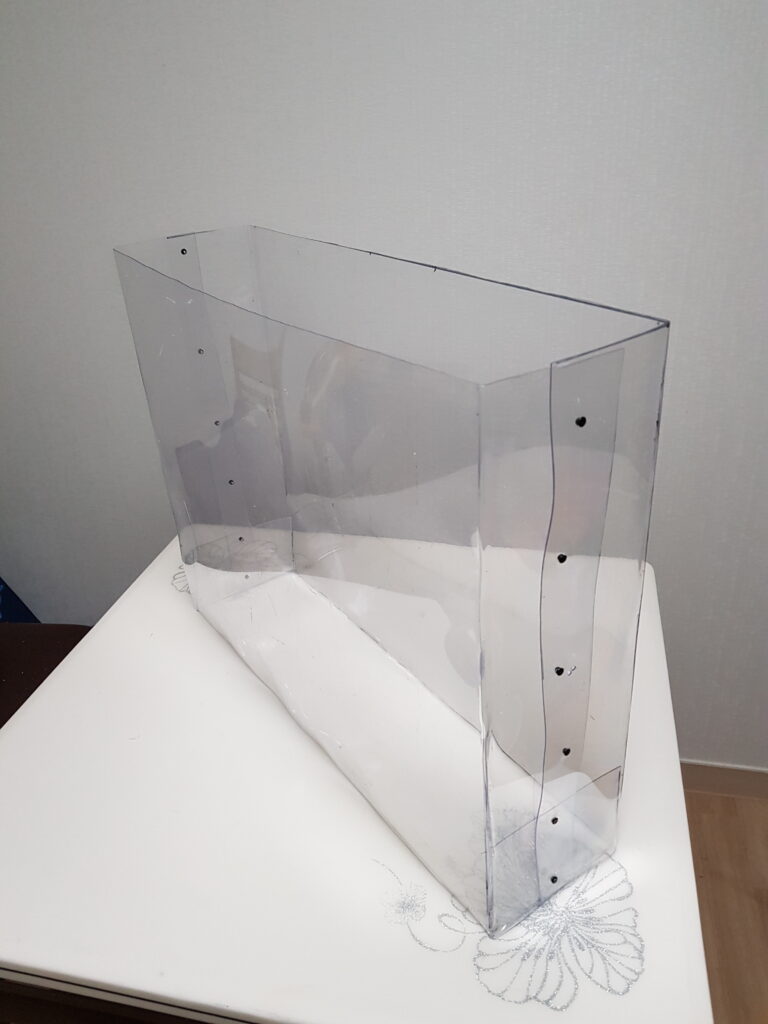
I used 3.2x8mm rivets to fabricate this box from PVC sheet material. I simply bent some edges with 10mm wide flaps then folded them and held them together with rivets.
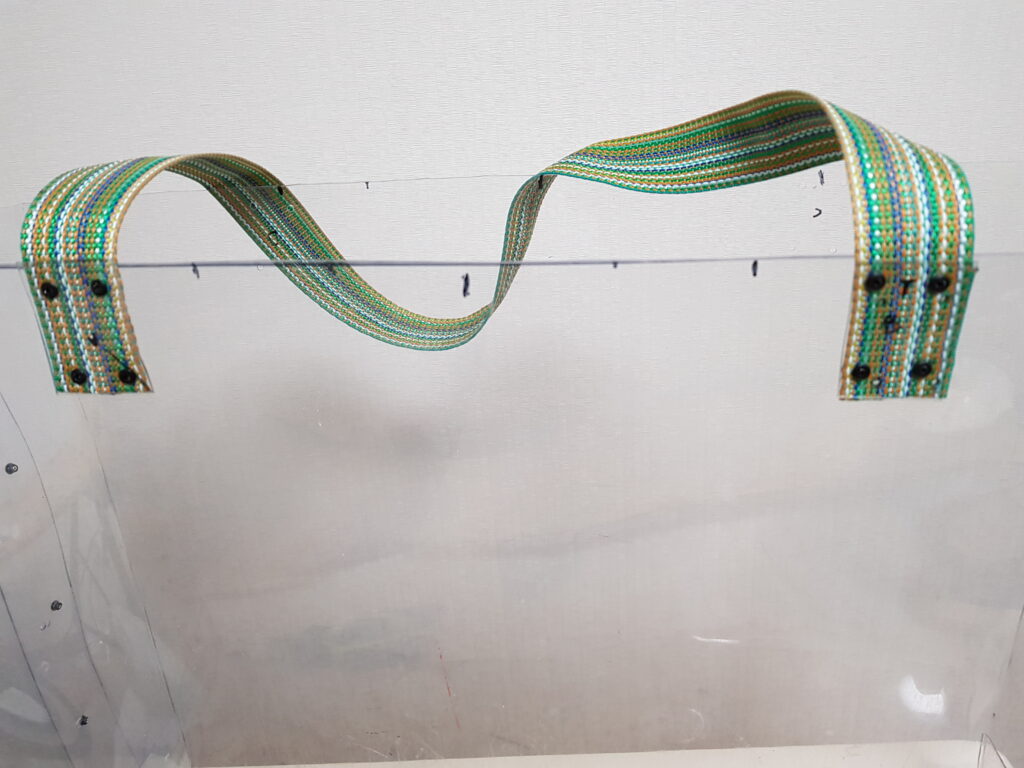
I folded the ends of the strap double for strength to carry a load. I then took some square pieces of PVC sheet from scrap-material and laid it on top of the folded strap. I made holes in the strap with a hot nail to line up with the holes drilled in the PVC sheet square. I also used the same PVC sheet square as a pattern to drill holes on the sidewall of the box. In this manner, the four rivets all lined up perfectly as they passed through the square of PVC sheet plate and through the doubled-layer strap and into the sidewall of the box. These rivets held the strap very secure so that it can hold a lot of weight.
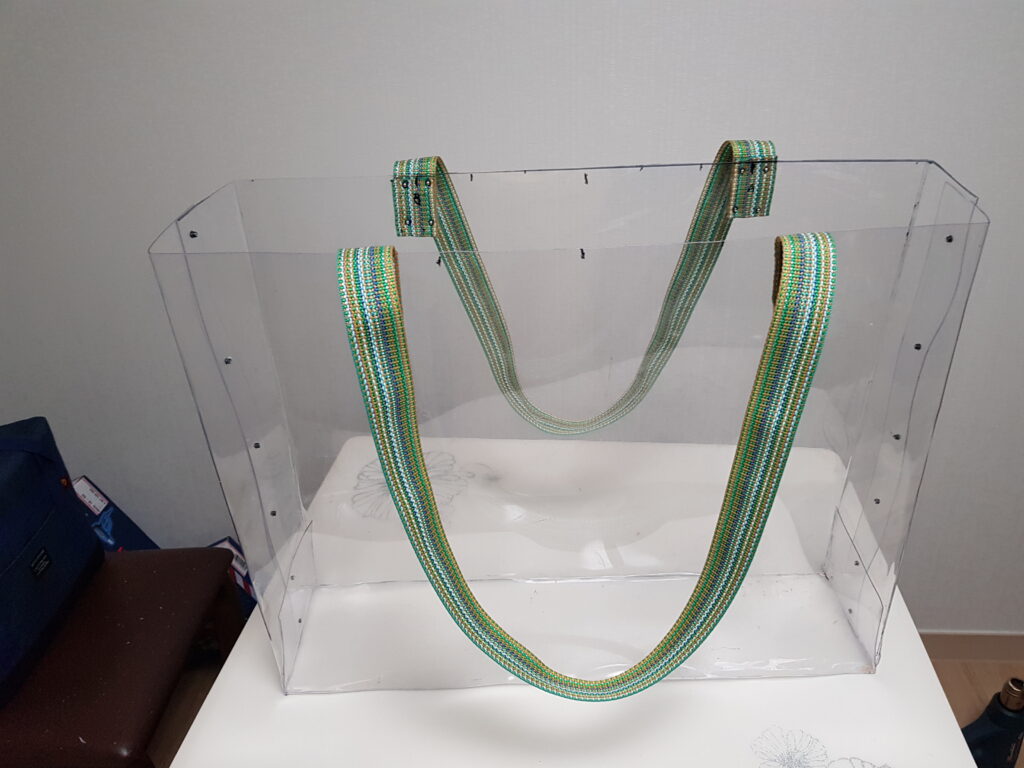
I made the handle long because if long-sized scrap materials protrude above the top of the box then the long handles still permit the box to be carried. Also, one side of the strap handle is a few centimeters longer than the other and I found that this is handy if the handles are suspended over a hook or peg. This results in the box being orientated in a somewhat level-position when suspended from a hook. But the length difference of the two strap handles is still so small that it is not noticed when carrying it. This is again an example of things that boys can learn when creating simple projects like these folded PVC sheet boxes. Most often the best lessons the boys learn are from their mistakes. Sometimes they will even make something by accident that turned out to be really great! We should never scold boys for mistakes but constantly use these mistakes as opportunities for learning.
Debriefing Airforce Pilots
I read about the experience of a combat fighter pilot in the US Airforce who said that when they came back from bombing missions that they were forced to have debriefing meetings as soon as they landed. They may have been in the cockpit for many hours and were so exhausted that they were ready to fall asleep while standing but regardless of how tired they might be, they were kept awake for these vital “debriefing meetings” because of the vital importance (of the knowledge they gleaned) for the war effort. The fighter pilot explained that they were drilled with questions and probed about everything they had experienced and what tactics the enemy was employing and locations of antiaircraft batteries etc. This information was gathered from the (often exhausted) returning pilots and immediately this information was given to the command center so it could be passed onto those who needed to hear it. This information could save the lives of many pilots as well as large numbers of ground troops and even save the cost of destroyed fighter jets that are worth millions of dollars. This “questioning” also included the mistakes the pilots had made and what could be learned from these mistakes. This information was immediately passed onto command so that all pilots were made aware of what to watch out for and what mistakes to avoid.
Immaturity is Not a Sin
I remember when I was in high school shop class and I made a mistake and buggered-up the end of a measuring tape not realizing that the loose end was calibrated to add length when pulled and subtract length when pressed against a measured object. In my young mind, I thought that the loose (movable end) of the tape measure would give a false reading so in my teenager mind I thought this should be corrected. I then hammered the rivets in place to keep it from moving, not knowing what I was doing! When the industrial arts instructor saw the “buggered-up” end of this tape measured, he shouted “Who did this?!” All of the teenage boys in the entire class cowered with fear not knowing who did it and not knowing what they might have done wrong! I was petrified in fear as well and failed to admit my mistake because I was scared of this instructor who was in a rage for someone ruining a formerly “good” tape measure. It was at that moment I understood that the loose hook on the tape measure was engineered that way intentionally.
But the point here is that the instructor shouted in a rage when someone destroyed a perfectly good tape measure. When the teenage boys all froze up in fear then our minds went blank and generally that is the end of the learning process. This hits home to the fact that immaturity is not a sin. I learned a lesson from that experience and never hammered the rivets on the end of a tape measure the rest of my life! But if the instructor had explained clearly why this was wrong then this lesson could have been beneficial to all of the teenage boys in that class.
No one ever told me that there was a reason for having the hook on the tape designed to move with slots with a small gap that allowed forward and backward movement with a push or pull of the tape. But the gap was engineered to the same thickness as the hook of the tape measure. Thus it adding or subtracting the width of the thickness of the hook depending on if the hook was pulled or pushed. If the instructor fails to teach these things to the boys, then they will have no way of knowing.
This goes back to the example of the Airforce pilots who were debriefed as soon as they landed (even before they could eat or shower or sleep). The pilots can learn a great deal by mistakes and these lessons learned were immediately gleaned during the debriefing so that this helpful knowledge could be transmitted to the command center to pass onto other pilots. In real life, we must learn from our mistakes and the pilots who were fortunate enough to survive their mistakes could share what they learned with others so that others would not repeat the same mistakes as those before them.
There is a proper way to do things and boys should not be allowed to grow up as “feral-boys” (like those who never had a father or other male instructors to teach them). If they are raised by women and have no men to guide them then they will typically be messing up everything they touch in terrible manner (even later in adult life). The point here is that boys must be allowed to make mistakes but every mistake the boys make should be used as a learning opportunity to teach them the “right way” to do things.
In my own case, I was not being malicious or negligent when I “buggered-up” the end of the tape measure. I thought I was being helpful to keep the measurement accurate! How wrong I was but nevertheless I was not doing this in a “willful” manner. There are times however that some boys may be lazy or careless and negligent (like leaving tools out in the rain or laying in the mud etc.). That sort of behavior should be corrected by a man’s strong arm welding a “rod of correction” which will drive foolishness from the heart of a boy and he will never repeat that sort of careless or negligent behavior again.
See the link “Child Discipline” for more details.
A male instructor has to discern if the boy’s offense was done out of passive or lazy negligence or out of simple lack of knowledge done by an ignorant youth. If the boy is teachable, he can learn from his mistakes but if he is passive or lazy then he needs the rod of correction to drive the foolishness from him.
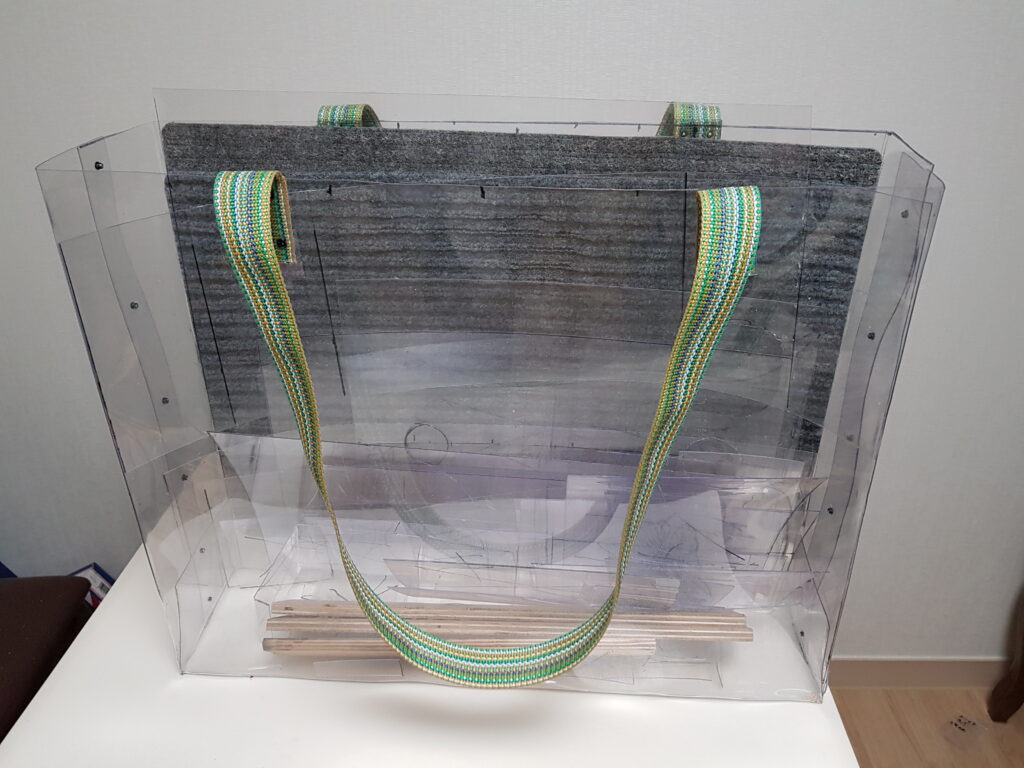
The scrap materials stored inside this carry/storage box consist of the PVC sheet cut-outs resulting from “left-over” materials from other projects (such as the tool cases). The scrap plywood slats are used repeatedly for bending the acrylic sheets along a straight line. I also have some cheap rugs in the box which help to protect a tabletop from scratching when I must work on a kitchen table (for lack of a shop bench). The extra-long strap handles permit that longer scrap pieces can be placed inside (and still carried) even with the top of the long scrap material protruding above the top of the box.
I actually “botched-up” the straps by making one strap-handle a bit longer than the other by accident. But later I discovered that this can make the box hang in a level orientation when hanging from a peg or a hook (therefore I just left it that way – finding out I did something right by accident). Again, this is an example of how boys can learn by mistakes they make and sometimes they can even “accidently” create something better by their mistakes.
